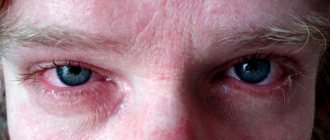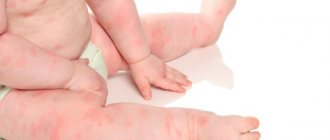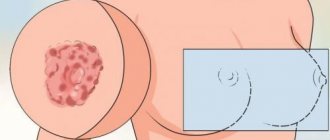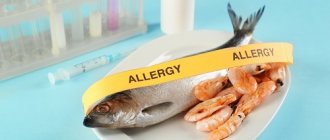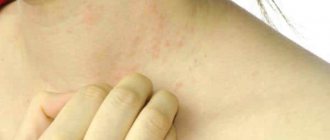The disease allergic dermatitis is a skin ailment that can affect a person at any age. In addition, allergic dermatitis occurs even in pregnant women, which is very dangerous. According to the international classification according to ICD-10, the disease has code L23. We will learn the causes and methods of treating allergic dermatitis from this material.
Causes

A skin disease that is triggered by contact with external irritants is called allergic dermatitis. The reason for the formation of this type of skin disease is not only the mechanical method of exposure. Allergies occur through inhalation of irritants, which occurs in frequent cases. Allergic dermatitis can appear due to the following factors:
- perfumery;
- paint and varnish and polymer materials;
- metals;
- medicines.
The underlying cause of the development of the disease is excessive sensitivity to allergens. Their local influence can cause the disease to spread throughout the body. You can cure a dermatic disease yourself at home, but first visit a doctor. The danger of the disease is due to the fact that dermatitis can develop into a complication stage, causing swelling of the throat and symptoms of suffocation. In this case, it is necessary to hospitalize the patient.
Classification
Toxicallergic inflammatory skin lesions can be divided according to the type of rash, which can be limited or widespread.
- Spotted toxicoderma is divided into hyperemic, hemorrhagic (purpura) and pigmentary; they most often develop when arsenic , bismuth , mercury , Penicillin, Metacycline, Methotrexate , petroleum hydrocarbons, some contraceptives, as well as low-quality food products enter the body.
- Papular toxic-allergic dermatitis can develop after long-term therapy with Chingamine, Quinine, Phenothiazine, PAS, Streptomycin, Tetracycline , iodine and mercury preparations.
- Nodular toxicoderma with the formation of painful inflammatory nodes occurs with the use of sulfonamides, Methotrexate, Cyclophosphamide, Griseofulvin , as well as with vaccination.
- Pustular toxicoderma most often develops under the influence of halogens (bromine, iodine, etc.), vitamins B6, B12 , Isoniazid , phenobarbiturates, Lithium, Azathioprine drugs , the likelihood of pathology increases in the presence of staphylococcal infection in the pilosebaceous layer, especially on the chest, face, back.
- Vesicular and bullous lesions can appear in response to therapy with sulfonamides, barbiturates, salicylates, and antibiotics.
According to the severity of the disease, they are divided into:
- mild forms of toxicerma, which are characterized by damage only to the epidermal layers, without extensive erosions, systemic pathologies affecting organs and vital functions;
- severe forms of dermatitis, which include erythroderma, Lyell's syndrome and Stevens-Johnson .
Lyell's syndrome
The most severe form of toxic epidermal necrolysis, which is characterized by skin desquamation and bullous lesions that quickly rupture and form extensive bright red erosions. The mechanism of protein metabolism disorders is based on discoordination of proteolysis. The disease also affects the heart, kidneys, liver, abdominal organs, and may be aggravated by the presence of a secondary infection. Requires emergency resuscitation and has an average mortality rate of 25-30%.
Stevens-Johnson syndrome
In some people, in response to drugs such as Modafinil , Carbamazepine , Lamotrigine , Nevirapine , Allopurinol , sulfonamide antibiotics. The development of fever begins, accompanied by pain in the joints and muscles, the appearance of various types of rashes, gray-white spots, cracks, inflammation and other defects of the skin and mucous membranes, which bring discomfort, itching and severe pain. Exposure to the mucous membranes of the eyes leads to conjunctivitis.
Types of allergic dermatitis ICD-10
ICD-10 code L23 is a special international classification; it was adopted at the 10th meeting of the World Health Organization. This is a kind of normative document through which a unified medical approach and international comparability of materials are ensured.
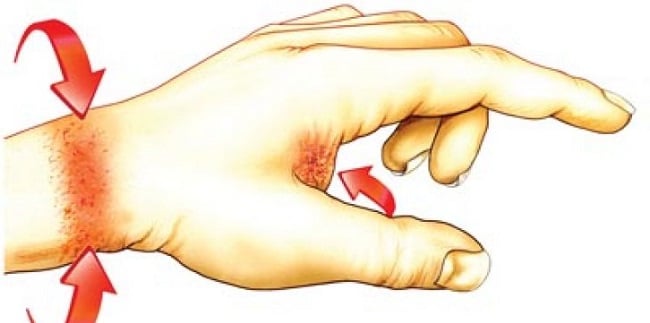
Allergic dermatitis is divided into several types.
- Contact. It is formed through the body’s reverse reaction to the influence of external stimuli. The disease forms immediately after the pathogen enters the skin.
- Toxic - allergic. Malaise develops when an irritant penetrates the organs of the respiratory system, gastrointestinal tract or when they are administered intravenously. This type manifests itself as symptoms of a rash spreading throughout the body.
- Atopic. It is formed against the background of combinations of a respiratory disease with chronic skin lesions. It occurs in children and pregnant women. Its symptoms are caused by the appearance of a rash and irritation on the skin.
- Fixed. Treats with the most loyal, as it has signs of local minor inflammation of the integument. The reason for the development is the body’s response to sulfonamide substances.
Each of the listed types of disease has its own stages of complications. The dangerous phase is acute allergic dermatitis, complicated by swelling of the larynx. Chronic dermatitis is also a severe form, which is practically impossible to completely cure.
Encoding Features
The coding of allergic dermatitis according to ICD-10 L23 is divided into points depending on the etiological factor of the disease. Since it is not always possible to identify the cause of the pathology, the corresponding code is also allocated for such cases.
Each type of allergic dermatitis in ICD-10 begins with code L23, in which a second digit is added after the dot, indicating the specific cause of the allergy:
- 0 – any metal;
- 1 – adhesive substance;
- 2 – cosmetics;
- 3 – medications, medicines;
- 4 – coloring component (dye);
- 5 – other chemicals;
- 6 – food product in contact with skin;
- 7 – plants (except those included in clause 6);
- 8 – other substances;
- 9 – unknown reason.
In fact, the list of irritants that provoke the development of allergic dermatitis is very long. Each person may have an individual skin reaction, even to completely safe substances or materials. But in any case, the main cause of pathology is excessive sensitization (susceptibility) of the body to a particular pathogen.
Symptoms

This disease is divided into types, which correspond to certain symptoms of manifestation.
- Contact dermatitis. The disease is expressed in the form of a rash, skin irritation and the formation of ulcers in the place where the negative impact of the allergen occurs. If the cause of the disease is eliminated in a timely manner, the symptoms quickly disappear. The history of ICD10 indicates that in the development of the disease the main role is played by the volume of exposure to the allergen, as well as its duration. Symptoms appear in a similar form when the irritant is repeatedly touched.
- Toxic. Has signs of a continuous skin rash. The rash on the body spreads quickly, thereby affecting new areas. Signs of this type are caused by severe skin irritation, itching and the formation of papules. Zinc-based ointments and creams are used for treatment.
- Atopic. The sign is itchy, wet rashes on the skin. This type of disease actively becomes chronic in the absence of therapy or in the absence of further treatment. The disease can be treated at home using ointments.
- The fixed appearance has clear signs of purple patches on the skin. This type can be cured by using sulfonamine drugs.
Diagnostics
Research methods • If ACD is suspected, a skin patch test is performed with a standard set of contact allergens attached to a patch tape that fixes them on the skin for 48–72 hours.
The reaction is assessed 20 minutes after removal of the allergen • Identification of a possible photosensitizer.
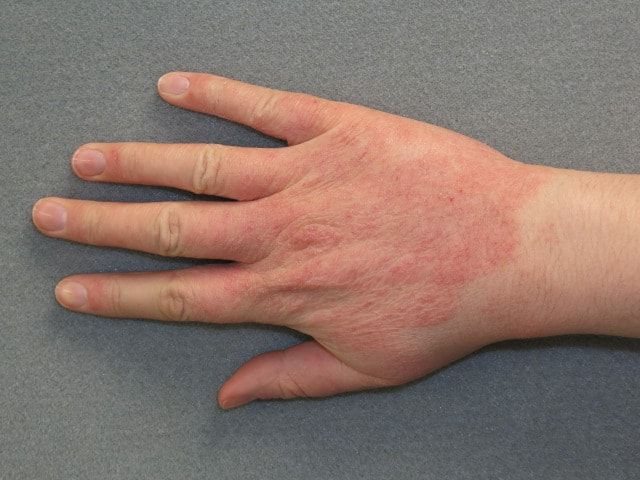
Differential diagnosis • Infections caused by HSV • Bullous pemphigoid • Seborrheic dermatitis • Atopic dermatitis.
Treatment

In the early stages, any form of the disease can be completely cured. Depending on the type of illness, there is an appropriate approach:
- Use of antihistamines. They help relieve itching, irritation and swelling. These drugs include: Claritin, Claritidine and Tavegil.
- Detoxification therapy is used in difficult cases. This method uses: activated carbon, sodium thiosulfate, laticort. Detoxification treatment is often carried out in a hospital setting.
- Local exposure, i.e. the use of ointments and creams: Akriderm, Sinaflan, as well as other drugs. It is effective and safe, therefore it is approved for children and pregnant women.
The result of recovery depends on the timely implementation of measures and the correctness of treatment.
Treatment of toxicoderma in adults and children
Treatment of toxicoderma can last from several days to several months.
It all depends on how acute the form of the disease is and whether the patient’s condition allows the use of potent drugs.
Task No. 1 is to identify the cause of the disease and eliminate the allergen from the patient’s life.
Treatment is carried out comprehensively. The following medications are used:
- for the treatment of mild forms - Solcoseryl, Bepanten, Actovegin;
- if the disease is assessed as moderate - Oxodolin, Furosemide, Duphalac;
- for severe inflammation - products containing xeroform, naphthalan;
- against itching - Fenistil, Erius (they are also prescribed for children, they have no side effects);
- for the rehabilitation of inflamed areas - Miramistin.
We invite you to read about hair growing from a mole: is it good or bad and can it be pulled out?
During pregnancy, only the doctor selects medications for the patient so that they are not only effective, but also safe for the expectant mother and her child.
Folk remedies can significantly improve the patient's condition. The main thing is to coordinate treatment with your doctor.
People suffering from toxidermia often ask the question whether it is possible to wash with this disease. In the traditional view, a bath and rubbing with a towel are unlikely to bring relief.
However, if you prepare it using a decoction of oats (200 g of grains are simmered in a liter of water over low heat for an hour), pouring the healing liquid into a bath filled with warm water, this will help get rid of itching.
It is recommended to do such baths every other day, provided that the acute phase of the disease has been successfully passed. Baths can also be prepared with a decoction of chamomile or oak bark. After baths, the skin needs to be moisturized with lotion or cream.
For compresses and applications, decoctions of St. John's wort, nettle, and string are suitable. Oils such as olive and peach are effective against peeling.
Clinics for treatment with the best prices
Price
Total: 630in 36 cities
| Selected clinics | Phones | City (metro) | Rating | Price of services |
| Vitbiomed+ in Beregovoy Proezd | +7(499) 519..show Appointment +7(499) 519-36-63+7(495) 152-44-49 | Moscow (metro station Fili) | rating: 4.4 | 4800ք (90%*) |
| Road Clinical Hospital of JSC Russian Railways | +7(812) 679..show+7(812) 679-70-03 | St. Petersburg (metro station Ploshchad Muzhestva) | — | 5190ք (90%*) |
| Clinic of St. Petersburg State Pediatric Medical University | +7(812) 542..show+7(812) 542-93-57+7(812) 248-18-40+7(812) 295-46-23+7(812) 295-40-31 | St. Petersburg (metro station Vyborgskaya) | — | 6520ք (90%*) |
| MC Family in Lobnya | +7(499) 519..show Appointment +7(499) 519-35-56+7(499) 519-35-88+7(499) 754-00-03 | Lobnya | rating: 4.1 | 6570ք (90%*) |
| VCEiRM im. A.M. Nikiforova Ministry of Emergency Situations of the Russian Federation at Optikov | +7(812) 339..show+7(812) 339-39-39+7(812) 607-59-00+7(981) 758-89-80 | St. Petersburg (m. Staraya Derevnya) | — | 6680ք (90%*) |
| VCEiRM im. A.M. Nikiforov Ministry of Emergency Situations of the Russian Federation on Ak. Lebedeva | +7(812) 339..show+7(812) 339-39-39+7(812) 607-59-00+7(981) 758-89-80 | St. Petersburg (metro station Lenin Square) | — | 6680ք (90%*) |
| CDC Izmailovsky NMHC named after. Pirogov | +7(499) 464..show+7(499) 464-03-03 | Moscow (metro station Pervomaiskaya) | — | 7260ք (90%*) |
| CDC NMHC named after. Pirogov in Gagarinsky Lane | +7(499) 464..show+7(499) 464-03-03 | Moscow (metro station Smolenskaya) | — | 7260ք (90%*) |
| MC Pangea on Bolshaya Cherkizovskaya | +7(495) 788..show Appointment +7(495) 788-67-86+7(495) 122-22-03+7(495) 741-91-03 | Moscow (metro Preobrazhenskaya Square) | rating: 4.4 | 7280ք (90%*) |
| Central Clinical Hospital RAS | +7(495) 921..show+7(495) 921-34-74+7(499) 400-47-33 | Moscow (metro station Yasenevo) | — | 7650ք (90%*) |
| * — the clinic does not provide 100% of the selected services. More details by clicking on the price. | ||||
Source
According to statistics, the number of people with manifestations of allergic dermatitis is steadily growing. This is due, for the most part, to the active development of the chemical industry and the introduction of new medicines, cosmetic products, and household chemicals into daily use.
